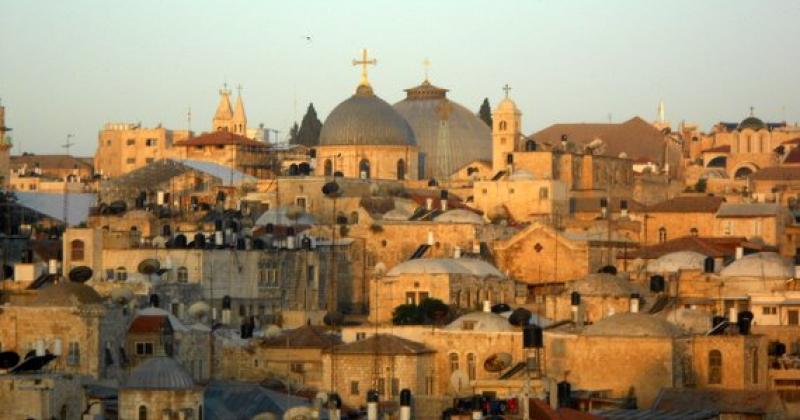The Vicariate of St. James celebrates 60 years in Jerusalem. And in a pastoral letter the Vicar Father David indicates today's challenges for this community.
2015 is a year of significant anniversaries for the small community of Hebrew-speaking Christians in Jerusalem. Sixty years have passed, in fact, since the institution of the Opera of St. James, born to give a point of reference to those - raised in a Jewish context and arrived at Catholicism via different paths - felt the need of a community that would accompany them in this journey; a community which would revive in Israel - overcoming the climate of mutual suspicion between Jews and Christians - an experience similar to that of the Judeo-Christian communities. 2015 is also the year in which they are celebrating the fiftieth anniversary of the conciliar declaration Nostra Aetate, a key text in the reopening of dialogue between Jews and Christians, the elaboration of which is precisely in this small reality, the frontier created as a fundamental contribution through one of its founders, the Dominican Father Bruno Hussar of Jewish origin.
To celebrate these anniversaries, the Jesuit Father David Neuhaus - himself the son of a Jewish South African family, vicar of the Latin Patriarch of Jerusalem for this community - has recently published a pastoral letter to his vicarage. The text - which is dated August 9, Feast of Blessed Edith Stein - is aimed at the seven kehillot (communities) that currently exist in Jaffa (the ancient city, next to which the pioneers of Zionism built Tel Aviv), Jerusalem, Haifa , Beer Sheva, Latrun, Nazareth and Tiberias. Only a few hundred faithful all in all, but an equally precious sign, and not only for Israel.
“A church within the Jewish environment,” said Father Neuhaus in the pastoral letter, “returns a missing dimension to the universality of the Body of Christ. We are called to be a constant reminder to the Church of its Jewish origins.” Hence the call by the Vicar to the faithful to be “a bridge to healing and reconciliation between Jews and Christians in the land of Jesus,” seeking to raise awareness of Jesus of Nazareth “as a son of this land and of the Jewish people.” Neuhaus stresses in particular the challenge of giving an account of Christianity bearing in mind the categories of Judaism today, not only from the common biblical roots, but also in dialogue with the rabbinic texts, medieval and modern.
This particular vocation - in the Latin Patriarchate of Jerusalem - is lived today alongside Christians of Arab descent. And this becomes a sign for a Holy Land marked by seemingly endless conflict between Israelis and Palestinians. “Together,” writes father David in the pastoral letter, “notwithstanding the walls of enmity, because ‘He is our peace,’ the disciples of Christ, who speak Hebrew and Arabic, are called upon to demonstrate that justice, peace and equality are also possible in our land. Our life of faith is to show alternatives to war and violence, contempt and discrimination, involving others as brothers and sisters. The disciples of Christ can be a bridge between the Palestinian (and Arab) world, and the Israeli world. We cannot accept injustice but we must be sensitive to injustices wherever they are present, especially in our society. As disciples of Christ, we must preach forgiveness because we have a personal experience of what it means to be forgiven despite being sinners.”
Ultimately Neuhaus focuses on an environment that was hardly imaginable sixty years ago, but now increasingly calls into question the kehillot: the thousands of migrants who have arrived from Asia or from Africa to work in Israel, who find that they too are living their Christian faith in a Jewish context. “Not only are they our brothers and sisters in the faith,” writes the Vicar, “but we, the church of Hebrew in Israel, we have a special responsibility to them. They enrich us with their vitality and at the same time our work among them becomes a challenge for us.”
